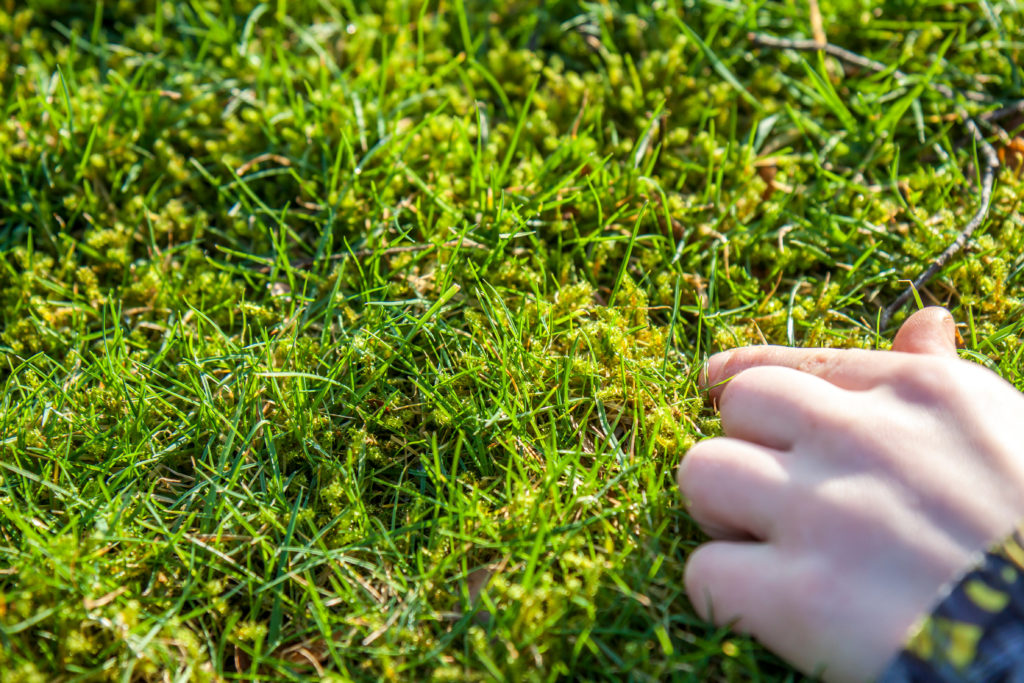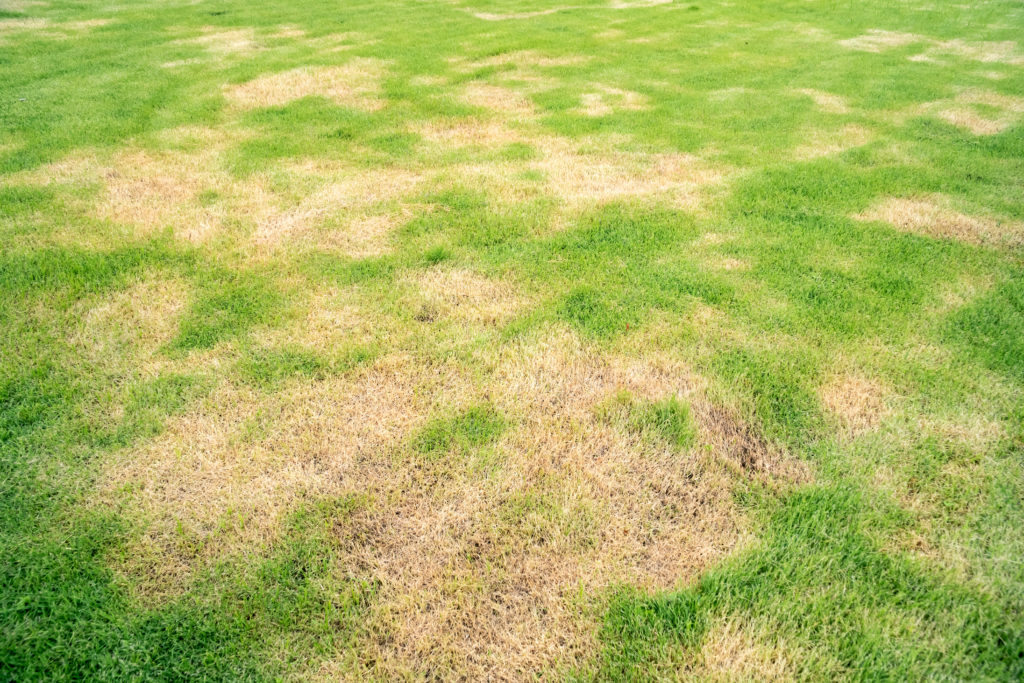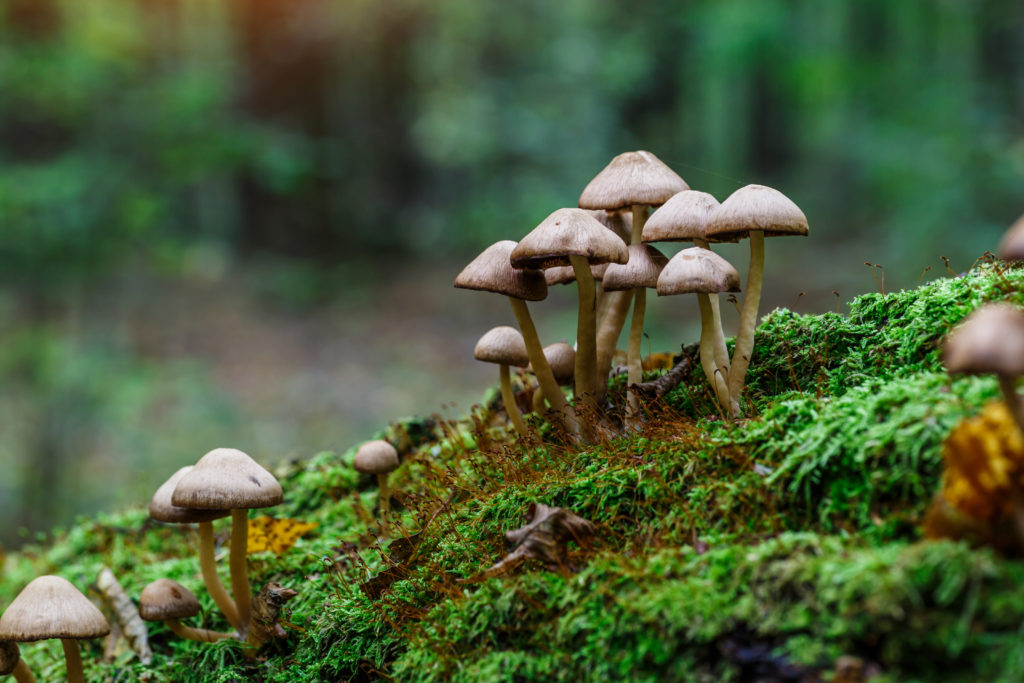Lawn Problems
MOSS
Lawn moss can form dense mats, outcompeting grass for water and nutrients and making the lawn uneven and spongy to walk on. These primitive plants thrive in damp shady conditions and can quickly spread in struggling lawns. Moss in lawns is a sign that there is an underlying problem with the lawn. This can be caused by any of several factors, including:
- Poor drainage
- Shade
- Lack of fertiliser
- Grass cut too short
- Heavy foot traffic
Ridding lawns of moss requires a two-pronged attack – firstly, to remove the moss and secondly, to stop it coming back. Physically removing moss is done by scarifying using a machine coupled with aeration. If the moss problem is mild, it may be possible to get on top of it by simply scarifying and then improving the overall health of the lawn by regular lawn care to stop the moss from coming back. However, getting rid of moss in lawns where there is a serious problem needs a combination of moss killer, scarifying, and lawn care.
WEEDS
Daisies, dandelion, chickweed, speedwell, thistle, buttercup, and clover are very common lawn weeds, they seed and germinate at different times of the year. Over-the-counter lawn weed killers will often be expensive and ineffective. Our lawn operatives take the hard work out of lawn weed control for you, giving you the results, you want for your lawn. Most of all saving you money in the long term. Built into the annual treatment plan is the regular monitoring of lawns for weed infestation. As a result, the appropriate herbicide is applied to your lawn where it’s needed most thus giving you a beautiful weed-free lawn
LAWN DISEASES
The two most common diseases are red thread and yellow grass/leaf spot which is caused by the grass plant becoming stressed and therefore more vulnerable. Stress is caused by a variety of reasons such as: drought, moss, compaction or poor mowing techniques, prevention is always better than a cure. Red thread can be identified by reddish tint on the grass blade caused primarily by high humidity and secondarily by thatch, compaction, poor mowing, and a lack of nutrients. Again, yellow grass looks poorly with floppy grass blades and a general yellowing of the affected area. Whilst it is a different fungus its treatment and maintenance are the same. Maintaining a healthy lawn is the best way to prevent lawn disease. However, if a lawn disease is affecting your lawn, we can treat it.
MUSHROOMS
It’s not uncommon to wake up one morning and find mushrooms growing on the lawn from September onwards. Whilst being unsightly it is a sign of a very fertile lawn and with a little self-maintenance and a disciplined mowing routine, it can be managed. I recommend walking the lawn and removing the heads of the toadstools gently with your wellies, soft brush, or rake. I have found that a dedicated routine of mowing, treatments, and lawn machine work can dramatically reduce the build-up of mushrooms. It is not recommended to use a fungicide on the mushroom as it has an adverse reaction on the lawn’s biodiversity and longevity.
Bronze
Programme
or £15 per Treatment*
POA
Get in touch for price
- Weed Sure
- Spring Sure
- Summer Sure Early
- Summer Sure Late
- Autumn Sure
- Winter Sure
On a lawn of 40 m2*
Silver
Programme
Best Seller
Saving 15% by DD
POA
Get in touch for price
- Hydro Sure
- Weed Sure
- Spring Sure
- Summer Sure Early
- Summer Sure Late
- Autumn Sure
- Winter Sure
- Aeration
- Scarifying
On a lawn of 40 m2*
Gold
Programme
Saving 30% by DD
POA
Get in touch for price
- Hydro Sure x2
- Weed Sure
- Spring Sure
- Summer Sure Early
- Summer Sure Late
- Autumn Sure
- Winter Sure
- Aeration
- Scarifying
- Stress Sure
- Disease Management
- Top Dressing + Overseeding
On a lawn of 40 m2*
Let Us Help You Get The Perfect Lawn!
Together we can create and care for the perfect lawn.








